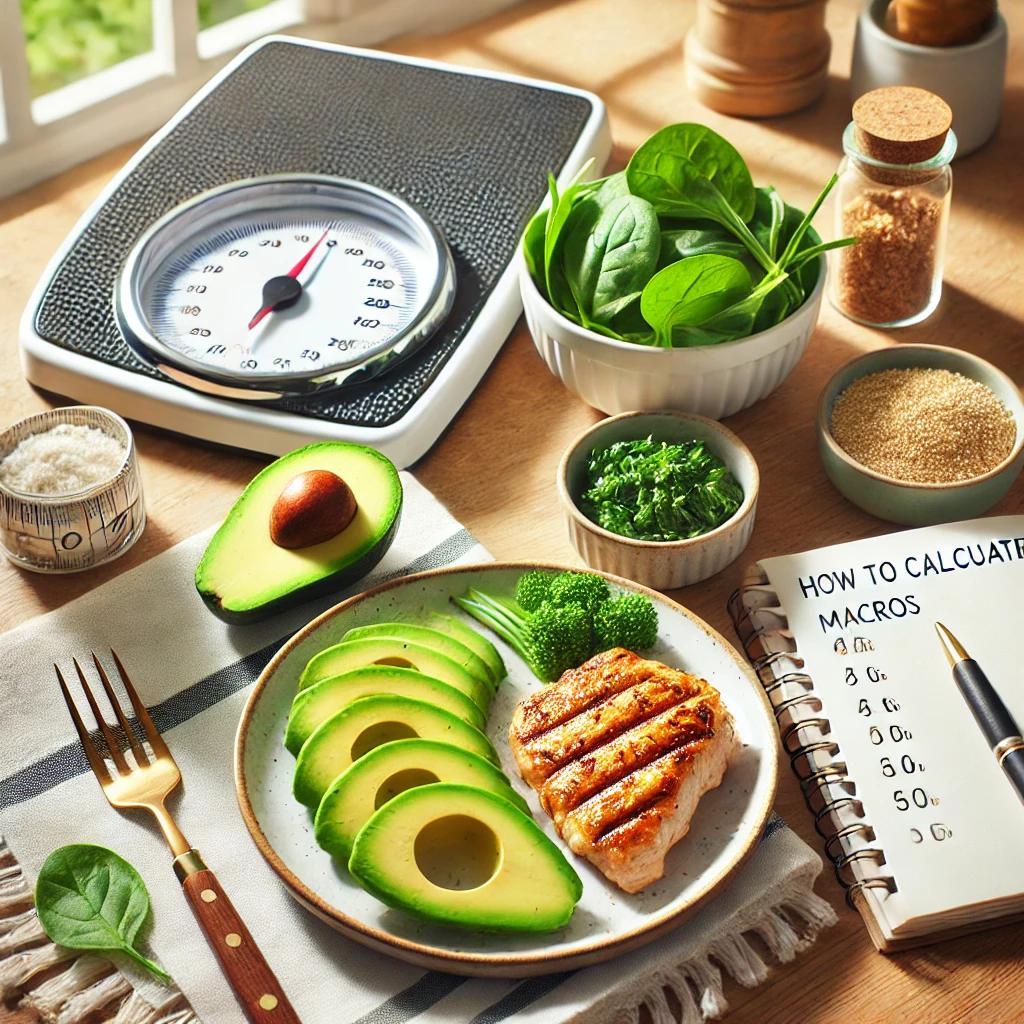Table of Contents
How to Calculate Macros for Keto: A Guide for Beginners
Embarking on a ketogenic diet can feel overwhelming at first, especially when it comes to figuring out your macros. If you’re in your 40s or older and looking to take control of your health, lose weight, or boost energy, keto can be a game-changer. But before you dive in, understanding how to calculate macros for keto is essential for success.

In this post, we’ll break down exactly what macros are, why they matter, and how to calculate them step by step. By the end, you’ll feel confident in setting up your keto-friendly meals tailored to your goals.
What Are Macros and Why Are They Important?
Macros are the three main nutrients your body needs to function: carbohydrates, proteins, and fats. Each plays a unique role in your diet:
- Carbohydrates: Your body’s usual energy source, but keto flips this by drastically reducing carbs to encourage fat burning.
- Proteins: Vital for muscle repair, immune function, and overall health.
- Fats: Your primary fuel source on keto—think of fats as the new gasoline for your body.
The ketogenic diet relies on specific macro ratios to put your body into ketosis, a state where it burns fat for energy instead of glucose. The standard keto macro ratio typically looks like this:
- Fat: 70-75% of your daily calories
- Protein: 20-25% of your daily calories
- Carbs: 5-10% of your daily calories
These percentages may vary slightly depending on your goals (e.g., weight loss vs. maintenance).
Step 1: Determine Your Daily Calorie Needs
The first step in calculating your macros is figuring out how many calories you need each day. Your calorie needs depend on factors such as age, gender, weight, height, and activity level. To estimate your daily calorie needs, you can use the Mifflin-St Jeor Equation, a widely used formula:
For Women:
Calories/day = (10 × weight in kg) + (6.25 × height in cm) – (5 × age in years) – 161
For Men:
Calories/day = (10 × weight in kg) + (6.25 × height in cm) – (5 × age in years) + 5
Next, multiply the result by an activity factor to account for how active you are:
- Sedentary (little to no exercise): × 1.2
- Lightly active (light exercise/sports 1-3 days/week): × 1.375
- Moderately active (moderate exercise/sports 3-5 days/week): × 1.55
- Very active (hard exercise/sports 6-7 days/week): × 1.725
Let’s use an example:
- A 45-year-old woman who weighs 70 kg (154 lbs.), is 165 cm (5’5″) tall, and is lightly active would calculate: Calories = (10 × 70) + (6.25 × 165) – (5 × 45) – 161 = 1380 + 1031 – 225 – 161 = 2025.Adjusting for light activity: 2025 × 1.375 = 2784 calories/day.
This is the total calories she needs to maintain her current weight. To lose weight, aim for a calorie deficit of about 500-750 calories per day.
Step 2: Set Your Keto Macro Ratios
Now that you know your daily calorie needs, it’s time to apply the keto macro percentages. Let’s say your calorie goal is 1,800 calories per day (adjusted for weight loss). Here’s how to break it down:
- Carbs: 5-10% of daily calories
-
- 5% of 1,800 = 90 calories from carbs.
- Since carbs have 4 calories per gram, divide 90 by 4 = 22.5 grams of carbs/day.
- Protein: 20-25% of daily calories
-
- 25% of 1,800 = 450 calories from protein.
- Protein has 4 calories per gram, so divide 450 by 4 = 112.5 grams of protein/day.
- Fat: 70-75% of daily calories
-
- 70% of 1,800 = 1,260 calories from fat.
- Fat has 9 calories per gram, so divide 1,260 by 9 = 140 grams of fat/day.
Your final macros for 1,800 calories/day:
- Carbs: 22.5 grams
- Protein: 112.5 grams
- Fat: 140 grams
Step 3: Track Your Macros
The easiest way to track your macros is by using a smartphone app like MyFitnessPal, Cronometer, or Carb Manager. These apps allow you to log your food intake and monitor how well you’re sticking to your macro goals.
Here’s how to get started:
- Input Your Custom Macros: Set your macro goals in the app.
- Log Your Meals: Weigh and measure your food to ensure accuracy.
- Monitor Progress: Adjust as needed if you’re not seeing results after a few weeks.
Step 4: Adjust Based on Your Goals
The ketogenic diet isn’t one-size-fits-all. You may need to tweak your macros based on your specific goals:
- Weight Loss: Stick to a calorie deficit but ensure you’re getting enough fat to stay satiated.
- Muscle Building: Increase protein slightly (up to 30% of your calories) to support muscle repair and growth.
- Maintenance: Gradually increase your calories until you’re no longer losing weight.
It’s also important to listen to your body. If you feel fatigued, hungry, or irritable, you may need to adjust your calorie intake or macro ratios.
Tips for Hitting Your Macros
- Plan Your Meals in Advance: Meal prepping can help you stay on track and avoid accidental over- or under-eating.
- Focus on Healthy Fats: Incorporate sources like avocado, olive oil, nuts, seeds, and fatty fish.
- Keep Carbs Low: Stick to low-carb vegetables like spinach, broccoli, zucchini, and cauliflower.
- Don’t Fear Protein: While keto isn’t a high-protein diet, adequate protein is crucial for muscle maintenance and satiety.
- Hydrate and Add Electrolytes: Keto can lead to water and electrolyte loss, so drink plenty of water and consider adding sodium, potassium, and magnesium to your diet.
Common Questions About Keto Macros
1. Can I eat too much fat on keto?
While fat is the primary fuel source on keto, consuming more than your calorie goal can hinder weight loss. Stick to your macro plan.
2. Do I need to hit my protein goal exactly?
Protein intake doesn’t have to be exact, but getting too little can lead to muscle loss. Aim to get close to your target.
3. What if I go over my carb limit?
Occasional slip-ups happen. Get back on track with your next meal and stay consistent to return to ketosis quickly.
FAQ: Frequently Asked Questions About How To Calculate Macros For Keto
Q: How do I know if I’m in ketosis?
A: Common signs of ketosis include increased energy, reduced hunger, mental clarity, and even a metallic taste in your mouth. For accuracy, you can use urine strips, breath analyzers, or blood ketone meters.
Q: Do I need to count calories on keto?
A: While calorie counting isn’t always necessary, it’s helpful for beginners to ensure you’re staying within your macro goals, especially if weight loss is your goal.
Q: What happens if I don’t meet my fat goal?
A: Missing your fat goal occasionally isn’t a big deal, but consistently under-consuming fat may leave you feeling hungry and low on energy. Prioritize healthy fats to meet your target.
Q: Can I eat fruit on keto?
A: Most fruits are high in carbs and should be limited. Stick to small portions of low-carb options like berries, and monitor your intake carefully.
Q: How long does it take to get into ketosis?
A: It typically takes 2-4 days of strict carb restriction, but this can vary based on individual metabolism and activity level.
Q: Can I exercise on keto?
A: Absolutely! Many people find they perform well on keto, especially for endurance activities. Just make sure to stay hydrated and replenish electrolytes.
Conclusion
How to calculate macros for keto doesn’t have to be complicated. By determining your calorie needs, setting the right macro ratios, and tracking your intake, you’ll be well on your way to reaping the benefits of a ketogenic lifestyle. Whether your goal is weight loss, better energy, or improved health, the effort you put into balancing your macros will pay off.
Remember, it’s not about perfection but progress. If you’re consistent and patient, keto can transform your health and vitality—especially for those of us in our 40s and beyond. Ready to start your journey? Let’s keto it done!

